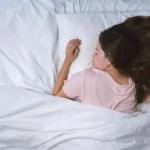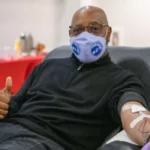What Is Light Therapy?
Contents
Light therapy sometimes called phototherapy, involves exposing the patients to artificial light, during the Winter season to reduce SADly.
Seasonal affective disorder (SAD) is a mental disorder, lack of sun exposure triggers hormones like serotonin and melatonin, (a mood controller) causes SAD.
This therapy primarily treats mental disorders such as depression, (SAD). And treat diseases, like jaundice, skin conditions, etc.
NOTE: The light source must be very bright, and full-spectrum light is usually 2500 lux (lux is a measure of light brightness).
How Does It Work?
Simple – It involves placing a powerful light lamp or box in front of you that emits enough light to make your skin feel like natural sunlight.
It is important of exposed to 10,000 lux enough amount, with proper distance, for 30 to 40 minutes is enough daily.
It acts as a natural sun and makes us feel good by triggering the increasing production of serotonin (a good feeling hormone) in our brain.
The important thing with bright therapy, in general, is you really have to be consistent with it, which means taking enough amount light every day.
Types
In addition, there are other types of colors light such as blue, red, and white (which are generally used in seasonal disorders).
Blue: Blue light therapy is generally used to treat sunburn damage and prevent skin cancer growths. And also used in skin disorders and infants.
Red: It is believed that it increases energy, reduces wrinkles, scars, redness, and acne, helps in weight loss, reduces inflammation, and pain, improves mood, etc.
White: It is generally used to treat Seasonal affective disorder, and it is used more in the cold when the sun is very less.
In what people is light therapy used?
The benefits of light therapy are well established, mostly used with seasonal affective disorder persons, and other mental disorders.
But light therapy is also used for other health conditions. include:
Bulimia: It is a type of eating disorder, In which a person eats large amounts of food with a loss of control over the eating, which leads to obesity.
Insomnia: It is a sleep disorder, It is very difficult for a person to fall asleep in this.
Seasonal depression: In this, a person experiences fear, and depression, when the season changes, mostly occurring in the winter, when the sun exposure is less.
NOTE: Daylight typically ranges from 10,000 to 25,000 lux, sunlight clocks in from 32,000 to 100,000 lux.
Who Should Avoid light therapy?
There are some people who should avoid light therapy such as:
- History of skin cancer
- leukoma eye disease patients
- cataract
- People who used photosensitizing medications
NOTE: To avoid possible risks, make sure to talk to your doctor if you are on any medication or have any health condition.
Used in various skin conditions
Light therapy for the skin usually involves exposure to ultraviolet (UV) light, this exposure can occur in a small area of the skin or over the entire body surface.
It suggests quite effective for treating various skin conditions such as:
Psoriasis
It causes inflammation, due to the immune system, and LT is known to suppress the immune system and reduce inflammation.
The minutes are decided based on the color and sensitivity of the person’s skin.
Scleroderma
Even LT or phototherapy cannot cure it completely, but it may be effective at managing the skin symptoms of this disease.
Atopic dermatitis
LT is considered one of the best treatments for this. Combined UVA and UVB light have a more beneficial effect than UVA or UVB light alone.
LT is an effective treatment because it forces skin cells to produce melanin to protect the body from UV damage. About 1 to 2 of the world population is affected by it.
Acne or pimples
Pimple acne (a bacteria that live on our skin), blocks pores, which swell up into bumps called acne.
One way to kill these bacteria is light, because bacteria are also sensitive to certain types of lights, and reduce the chance of pimples formation.
A doctor uses a moderate amount of blue or red light because these lights kill bacteria, that cause acne, without damaging the skin (2) (3).
Also used in other skin conditions such as:
- Help in healing wounds, studies have shown that it can treat chronic and acute wounds
- Reduce inflammation
- Prevent the risk of skin cancer
- Soothe itchy skin
- Lichen planus
The most common treatment is narrowband UVB, which has a wavelength of approximately 311–313 nanometers (4)
And exposure to specific wavelengths enables the body to produce vitamin D (5).
Helpful in Seasonal Depression
SAD is also known as seasonal depression, where lack of sun exposure triggers the internal clock.
When the internal clock trigger, there is a drop in hormones (that control our mood), called serotonin in our brain, that causes seasonal depression.
NOTE: In this situation, a bright light lamp, or box, acts as natural sunlight to lift your mood. where the light output range is 2,500 to 10,000 lux.
NOTE: How long to stay in front of it? depends on how well you handle its strength or light.
But about 30 to 40 minutes daily in front of it is enough in the morning, with a 30-40 cm distance.
Research has shown that LT is improve the symptoms of seasonal depression. But not helpful in normal or nonseasonal depression.
NOTE: However, LT alone does not completely cure the seasonal affective disorder but may help in reducing symptoms.
Learn Out – Healthy Food With Meditation That Relieves Stress, And Depression.
Pros
It is often used to reduce the symptoms of seasonal depression, but alone does not cure SAD or other mental disorders, also recommended to take medicines along with it.
Light therapy works faster than most other forms of treatment.
Exposure to low levels of red or near-infrared light is a type of energy, and our eyes can’t see, but our body can feel as heat (5).
It also heals the skin, muscles tissues, etc.
NOTE: Light therapy lamp is portable, safe to use, associated with fewer side effects, nonaggressive, and Accessible.
Cons
It also has some adverse effects such as:
These adverse impacts are usually minimized and can ease when the device is turned off or after a few days (6).
Light therapy in UV form causes skin damage and erythema even for small doses (7), also damages vitamins in the skin, and promotes free radicals.
Research suggests that Ultraviolet light has been linked to factors in the formation of cataracts (8) (9).
So consult your doctor before starting light therapy, because it may trigger other medical issues, or interact with medicines.
Keep In Mind Things
Spending a lot of time in front of a lightbox every day, before bedtime, may also make it harder to fall asleep.
Various studies show that morning time is an effective way to treat conditions.
Many people find improvement, but not everyone sees its benefits, However, that doesn’t mean light therapy won’t work for you.
A 2016 study involving 122 participants with LT, showed that combination with antidepressant medication was effective for improving depression symptoms.
What to Expect from a Nurse or doctor?
A nurse or doctor may tell you to sit in front of the light at a distance of about 3 feet, engaging in a variety of other activities, to feel comfortable.
But glancing directly into the light every few minutes the duration of taking prescribed 30 to 1 or 2 hours daily.
BOTTOM LINE
Research has shown that LT is improve the symptoms of seasonal depression. But not helpful in normal or nonseasonal depression.
A doctor uses a moderate amount of blue or red light because these lights kill bacteria, that cause acne, without damaging the skin.



